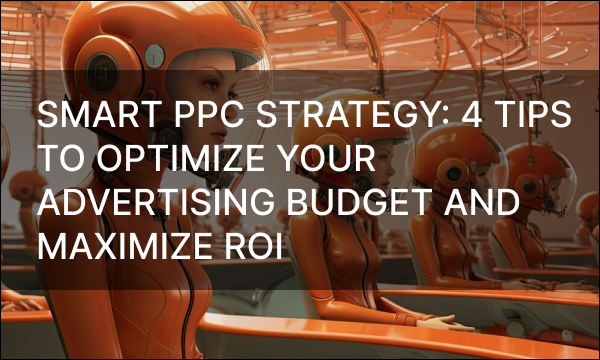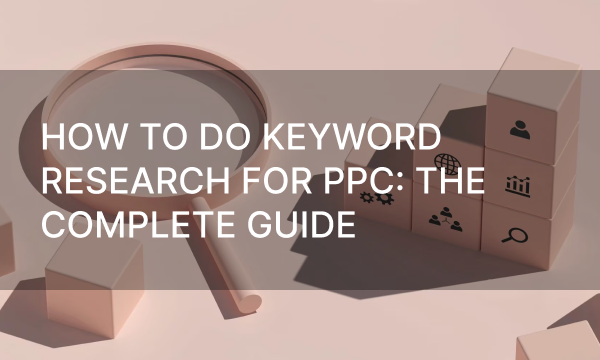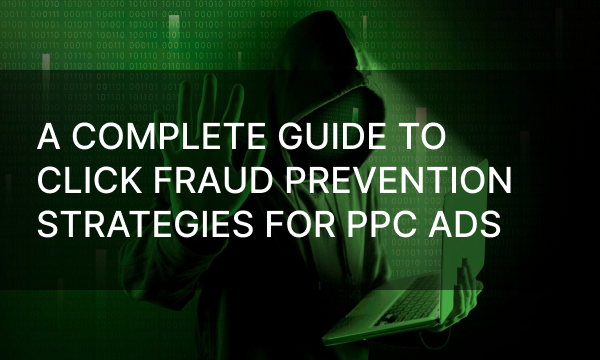Introduction to the B2B PPC advertising
B2B PPC advertising is a powerful marketing strategy that allows you to precisely target business audiences. It involves defining your target audience, choosing the right keywords, creating compelling copy, and optimizing landing pages. Google Ads and LinkedIn Ads can help you reach decision makers, while data analytics plays a vital role in measuring campaign performance and improving strategies. B2B PPC may not be a way for most B2B companies, but it can truly revolutionize your advertising efforts. In fact, a well-executed B2B PPC strategy can greatly boost lead generation and brand awareness in a competitive market.
In this blog post, you’ll discover the world of B2B PPC through simple and easy-to-understand explanations, tips, and strategies. You’ll learn about generating PPC leads that are interested in your products or services. You’ll gain insights on how to address specific industry needs and attract companies, departments, and ultimately decision makers.
How does B2B PPC work?
 Photo by the blowup on Unsplash
Photo by the blowup on Unsplash
B2B PPC advertising allows you to bid on keywords relevant to your target audience and display ads on search engines or social media platforms. Successful B2B PPC ads rely heavily on targeting potential business customers, using analytics to track conversions, and optimizing ad copy and landing pages to improve performance. Ad quality, relevance, and bid directly impact its placement and visibility, allowing you to reach decision makers and generate high-quality leads.
B2B PPC allows you to precisely target your desired audience based on specified criteria such as industry, job title, company size. Here’s how it works: you create ad campaigns tailored to your specific B2B audience and select keywords or criteria to ensure your ads are shown to the right people. When your prospects search for something related to the products or services you offer, or that matches your target criteria, your ads are displayed, and only if they click on the ads, you are charged.
Step-by-step guide on creating a B2B PPC ads
 Photo by Kate Trysh on Unsplash
Photo by Kate Trysh on Unsplash
To help you navigate the complexities of a PPC strategy for your B2B business, we’ll cover the basic steps needed to build a strong campaign.
1. Define Your Goals
The goals you want to achieve should be the basis for building your entire strategy. They serve as a guideline for your efforts throughout the campaign. You should carefully consider your main goals:
- Are you planning to launch a new product that requires increased brand awareness?
- Are you looking to expand your market presence and reach your prospects from new territories?
- Are you focused on increasing sales of your existing products in the current market?
General B2B PPC Campaign Goals:
- Lead generation
- Increasing brand awareness
- Promoting new products or services
- Driving website traffic
- Increasing sales
Be specific about your SMART, that is, Specific, Measurable, Achievable, Relevant, Time-bound, marketing goals to get the full picture of your expectations. Once you have these in place, you will be able to navigate your PPC marketing strategy creation with more ease.
2. Select the right B2B PPC platforms
Google Ads, LinkedIn Ads, Facebook Ads, and other platforms each offer unique features that may benefit your B2B campaign. What they differ in are ad formats and audiences, so you need to choose the platform that best matches your business goals. If you want to target companies looking for business solutions, LinkedIn is probably your best bet. If you want to reach prospects who need specific services, you’re more likely to succeed with Google Ads. By understanding the benefits of each platform and matching them to your goals, you can ensure your message reaches the right people at the right time.
The best platforms for B2B ads:
- Google Ads allows you to attract prospects who are searching for services or products. It offers wide reach and a variety of ad formats, making it suitable for a variety of B2B campaigns.
- LinkedIn Ads allows you to target clients looking for business solutions. It allows precise targeting based on industries, job titles, and company sizes, making it ideal for lead generation.
- Meta Ads or Facebook Ads have an extensive user base and detailed audience targeting options to effectively reach decision-makers and influencers in a less formal setting.
- Twitter Ads or X ads help you create brand awareness and engage with an audience interested in industry trends. With features like promoted tweets, trend takeover, and tailored audiences, you can reach customers discussing relevant topics.
- Microsoft Advertising or Bing Ads help you target enterprise customers. It’s especially fitting if your audience already favors Microsoft products and services.
3. Choose the most effective ad types
Each ad format has its own strengths, and you need to leverage them to maximize the impact of your campaign. If your goal is to increase brand awareness or promote new products or services, you can grab attention with visually striking images and graphics. If you want to reach prospects who are actively searching for solutions, text search ads can help.
The most effective ad types for B2B PPC:
- Search Ads: Use if you want to be at the top of search results when prospects are searching for your products or services.
- Display Ads: Use if you aim to grab attention with eye-catching images and graphics for brand awareness and visual storytelling.
- Video Ads: Use if you want to engage your audience by means of videos, which can be used for showing products, sharing reviews, or storytelling.
- LinkedIn Ads: Use if you want to narrow down your targeting by job title or experience, company, industry, interests and traits, etc.
- App Install Ads: Use if you want to promote your mobile app and increase installations among your target audience.
- Social Media Ads: Use if you want to reach a wide range of users active on popular social media platforms for brand awareness, lead generation, website traffic, and sales.
4. Choose the Right Keywords
Keyword research serves as the compass for your B2B PPC campaign, steering it through the vast digital landscape. By identifying the words and phrases your target audience uses when searching for solutions, it enables you to target valuable search queries and ensure your ads appear at the perfect moment — when prospects are actively looking for your products or services.
Tips for effective keywords research:
- Have a brainstorming session
- Write down all the keywords and phrases relevant to your business
- Use keyword research tools to find related keywords, search volumes, estimated CPC, and competition levels
- Analyze your competitors’ keywords to identify your strengths and weaknesses
- Focus on user intent
- Consider the intent behind keywords (informational, navigational, or transactional) to tailor them to your campaign goals
Long-Tail vs. Short-Tail keywords
Don’t limit your keyword choices to generic short keywords, which typically have higher search volumes but can be more expensive and require more effort to narrow down the user intent. Instead, explore possible long-tail keywords, which often have lower search volumes but tend to convert well because they closely match the user intent.
Negative keywords to filter traffic
Negative keywords filter out irrelevant traffic and save your ad budget. If you offer paid services, use «free» as a negative keyword to prevent your ads from being shown to users looking for free services. Update your list of negative keywords regularly to improve your campaign’s performance.
5. Identify your target audience
Segmenting your B2B audience for PPC advertising is one of the most difficult parts. There are important factors that can help shape the tone and approach of your PPC advertising. Don’t be afraid to try new ideas, which you can arrive at through in-depth analysis and planning:
- What features does your product/service have?
- What problems does it solve?
- Who is the end user?
- Who is the decision maker and has purchasing power?
- Do you want to address your selling points to the end user or to the decision-maker?
Techniques for selecting your target audience
1. Start with your buyer personas. Keeping your buyer personas in mind, you can always focus on their needs and pain points to offer Unique Selling Propositions to solve their problems.
2. Segment your audience based on business criteria. This is an important targeting step for advertising campaigns in the B2B world. Consider the following verticals:
- Target industries
- Type of company
- Company size
- Location
- Department
- Job title
3. Use demographic targeting to narrow down your audience. This allows you to target ads to people based on their age, gender, location, and income to focus on customers who are most likely to be interested in your products or services.
6. Create your ad copy and creatives
Your ad copy and creatives are the voice and face of your B2B PPC campaign and should speak the language of your audience. Creating compelling advertising content and visuals captures your audience’s attention and encourages them to take action. Whether it’s creating headlines, writing ad copy, or developing images and videos, they must deliver a message that resonates with your target audience.
Tips for crafting ad copy and ad creatives:
- Tailor your messages to the pain points of your target audience
- Highlight the features and the benefits of your product or service
- Use attention-grabbing words in your headline to gain interest
- Use reviews, awards and case studies to enhance social proof
- Use clear, concise, jargon-free language to deliver your message
- Use compelling calls to action to encourage users to take action
- Use visual storytelling to deliver your message in your ads
- Make your ad mobile-friendly and test it on different screen sizes
- Use sitelinks, callouts, and structured snippets to drive your ads
- Align your ads with the ad requirements set by the ad platforms
7. Budgeting and bidding strategies
The financial backup of your B2B PPC campaign includes strategic budgeting and bidding, which help you effectively allocate your spend, determine how much you’re ready to pay per click, and maximize ROI. By focusing on your budgeting and bidding strategy, you gain financial control and flexibility to fine-tune the performance of your B2B PPC ads.
The key factors for budget allocation and bidding strategies:
- Bidding on specific keywords
- Setting daily or monthly spending limits
- Adjusting bids based on device type, location, and audience
8. Optimize your landing page
The next important step is to create high-converting landing pages that should motivate users to take targeted actions, such as installing the app, subscribing, or making a purchase.
Key factors for creating a good landing page:
- High relevance of keywords or ad copy that visitors clicked on to get to the site
- Good usability so that visitors can quickly understand the site’s navigation
- Use strong, action-oriented calls to action that tell users what to do next
- Keep your page free of distractions that might divert users from your main call to action
- Optimize page load speed to avoid user frustration or high bounce rates
9. Effective strategies for ongoing PPC success
- Continuous monitoring and analysis of your PPC ads shows you what needs to be improved. Analyze CTR, conversion, and ROI to identify trends, patterns, and opportunities for optimization.
- A/B testing and experimentation with ad copy, creatives, landing pages, targeting options, different ad formats and bidding strategies helps you learn what resonates best with your audience.
- Avoid ad scams that try to steal a significant portion of your ad budget by engaging with your ads without the intent to buy. Automated bots click on your ads without showing any interest in your product or service, wasting your ad budget on fake clicks.
- Stay informed about industry trends as ad platforms often change their policies or operating principles, which can impact the performance of your ads. So always keep an eye on what’s new and adjust your B2B PPC campaigns accordingly to ensure they perform well.
Conclusion
In the rapidly evolving digital marketing landscape, B2B PPC ads have become a critical strategy for generating leads and driving conversions. While Google Ads still dominates, platforms like LinkedIn and Facebook offer unique benefits for targeting specific business demographics. Effective ad messages should address problematic issues and offer solutions, encouraging clicks and engagement. Landing pages need to be optimized for conversion with clear CTAs and content relevant to the ad.
Careful analysis of analytics and performance metrics is vital to optimizing B2B PPC campaigns. Key performance indicators like CTR, conversion, and ROAS provides you with the tools needed to make data-driven decisions. You can use PPC ads both as a driver of increased awareness and as a powerful tool for achieving desired business goals. Use this guide as a roadmap to navigate the challenges of B2B PPC ads with strategic insight.



